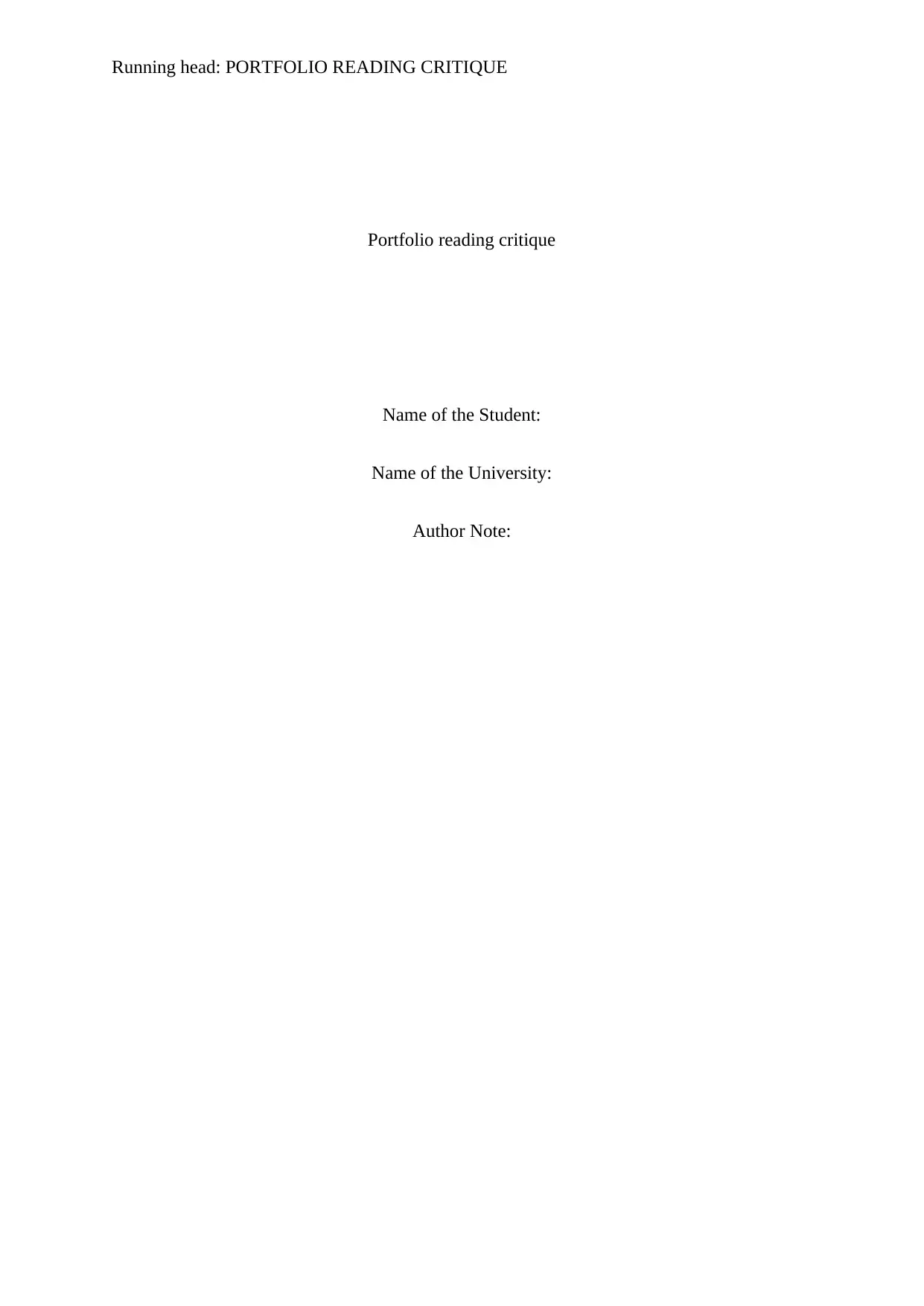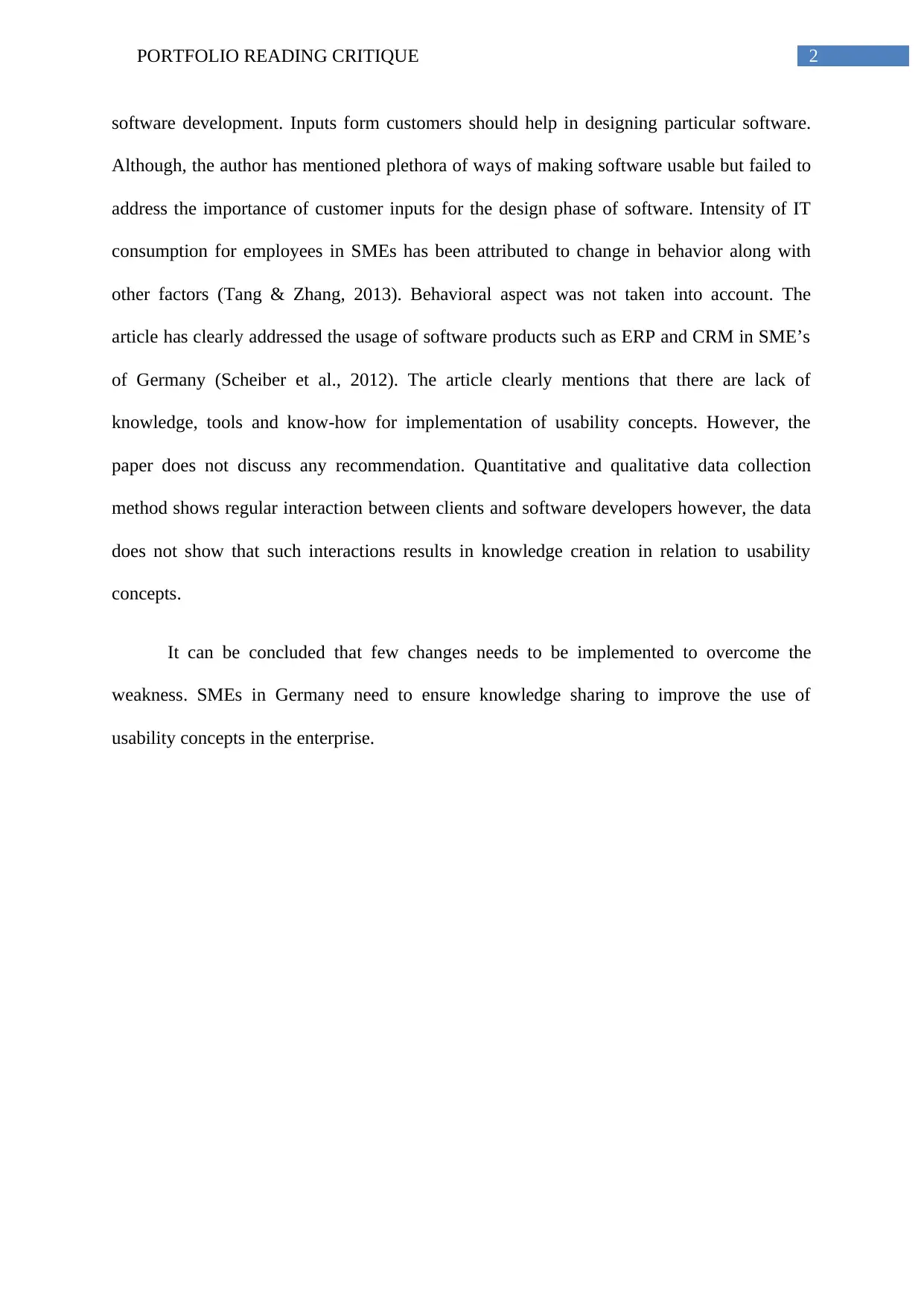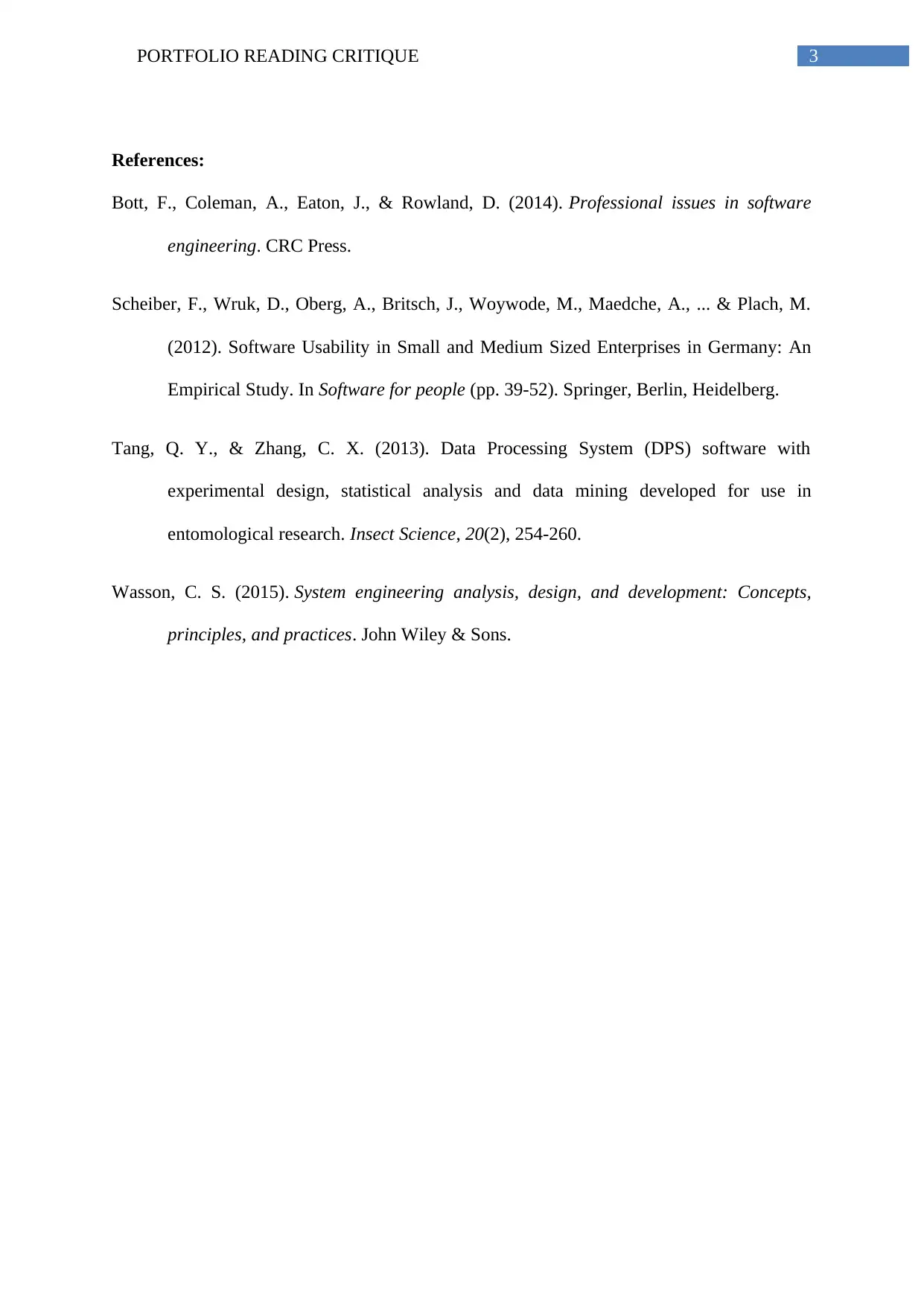An Analysis of Software Usability in Small and Medium Enterprises
VerifiedAdded on 2023/06/13
|4
|793
|169
Essay
AI Summary
This essay critically analyzes software usability in small and medium enterprises (SMEs) in Germany, evaluating the strengths and weaknesses of an article on the topic. The analysis highlights the importance of user-friendly interfaces and the need for software companies to adapt to evolving market demands. While acknowledging the article's insights into non-technical challenges like poor communication and unrealistic goals, the critique points out its failure to adequately address technical aspects, the role of customer feedback in design, and behavioral factors influencing IT consumption. The essay also emphasizes the lack of knowledge and tools for implementing usability concepts in German SMEs and suggests improvements through knowledge sharing and incorporating customer inputs in software design.
1 out of 4






![[object Object]](/_next/static/media/star-bottom.7253800d.svg)